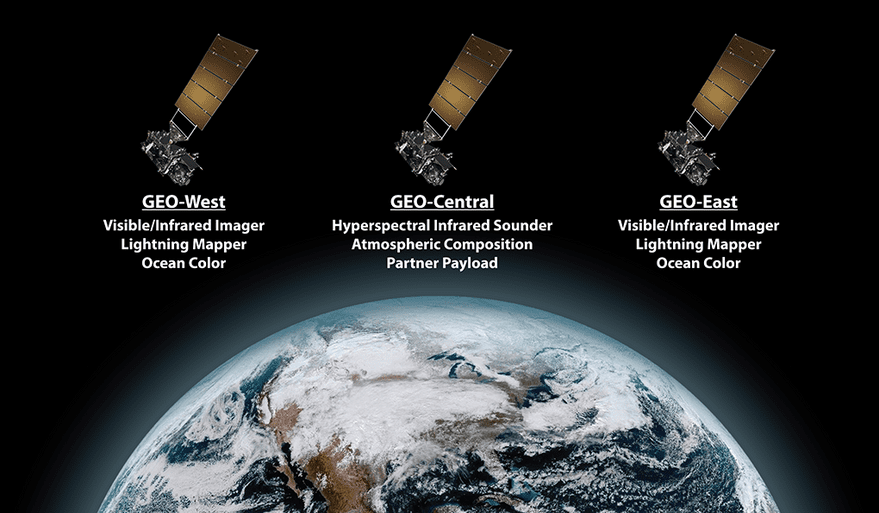Congress has approved a budget for civil space programs for the 2024 fiscal year, but in some cases, it is significantly lower than the requested funding.
On March 8, the Senate passed a bill combining six separate spending bills, including those for commerce, justice, science, and transportation. The House had passed the bill two days earlier, just hours before a continuing resolution was set to expire.
The bill remained unchanged from what House and Senate appropriators released on March 3. It allocates $24.875 billion to NASA for 2024, which is 8.5% less than the original request and 2% lower than 2023, even before accounting for inflation.
The bill has varying effects on other civil space programs. Two ongoing weather satellite efforts at the National Oceanic and Atmospheric Administration, the GOES-R geostationary program and the Polar Weather Satellites program, received their full request of $276 million and $342.4 million, respectively.
The GOES-R program is preparing to launch its fourth and final satellite, GOES-U, scheduled for no earlier than May on a Falcon Heavy. The Polar Weather Satellite funding will support continued work on the third and fourth Joint Polar Satellite System (JPSS) series of satellites, scheduled for launch late this decade and in the early 2030s.
However, funding for follow-on weather satellite programs in low and geostationary orbits was reduced. The bill provides $285 million for the GeoXO line of next-generation GEO weather satellites, less than the request of $417.4 million and the same the program received in 2023.
For LEO weather satellites, a program also known as Near Earth Orbit Network (NEON), the bill provides $78.5 million, less than the $133.6 million requested and the $96.4 million received in 2023. NOAA aimed to use the increase to support work on a pathfinder mission called QuickSounder.
In space weather, NOAA’s Space Weather Follow On (SWFO) program received the $97.2 million it requested as its SWFO-L1 mission prepares for a 2025 launch. However, a successor to SWFO, called Space Weather Next, received $151.6 million, the same as 2023 but less than the $225 million requested for 2024. Space Weather Next would begin work on a successor to SWFO-L1 and an instrument flying on the European Space Agency’s Vigil mission.
NOAA also oversees the Office of Space Commerce, which now includes developing a civil space traffic coordination system. The bill allots $65 million for the office, less than the $70 million it received in 2023 and the $88 million requested for 2024.
Another section of the bill that funds the Federal Aviation Administration provides $42.018 million for commercial space transportation. This matches the administration's request for 2024, and is an increase from $37.854 million received in 2023.
The House version of the bill had initially included an additional $5 million for the Office of Commercial Space Transportation, or AST, and instructed the office to utilize the funds to enhance launch and reentry processes. The final bill removed that funding, but the report does instruct the FAA to prioritize resources for improving these processes.
The approval of the bill has made the industry feel relieved because uncertainty about spending levels is now resolved, although some are disappointed about the actual spending levels.
Eric Fanning, president and chief executive of the Aerospace Industries Association, expressed gratitude to Congress for providing full-year funding for the Federal Aviation Administration and NASA, and urged them to do the same for the Defense Department in the next two weeks.
The Planetary Society expressed happiness that the bill was completed despite recent political uncertainty and praised Congress for finding a bipartisan compromise to fund NASA. It also commended the bill for funding agency programs and directing NASA to set up a project office for the Habitable Worlds Observatory.
However, the organization pointed out that the overall cut in NASA funding was mainly focused on NASA’s planetary science programs, particularly Mars Sample Return (MSR). The organization emphasized that raiding one division to support others is not a sustainable path forward for any decadal priority nor for balance within NASA’s science directorate.
NASA FY24 Appropriations (in millions of $)
| SCIENCE | $8,260.8 | $7,334.2 | -$926.6 |
| – Earth Science | $2,472.8 | $2,195.0 | -$277.8 |
| – Planetary Science | $3,383.2 | $2,716.7 | -$666.5 |
| – Astrophysics | $1,557.4 | $1,530.0 | -$27.4 |
| – Heliophysics | $750.9 | $805.0 | $54.1 |
| – Biological and Physical Sciences | $96.5 | $87.5 | -$9.0 |
| AERONAUTICS | $995.8 | $935.0 | -$60.8 |
| SPACE TECHNOLOGY | $1,391.6 | $1,100.0 | -$291.6 |
| EXPLORATION | $7,971.1 | $7,666.2 | -$304.9 |
| SPACE OPERATIONS | $4,534.6 | $4,220.0 | -$314.6 |
| STEM ENGAGEMENT | $157.8 | $143.0 | -$14.8 |
| SAFETY, SECURITY AND MISSION SERVICES | $3,369.4 | $3,129.0 | -$240.4 |
| CONSTRUCTION & ENVIRONMENTAL | $453.7 | $300.0 | -$153.7 |
| INSPECTOR GENERAL | $50.2 | $47.6 | -$2.6 |
| TOTAL | $27,185.0 | $24,875.0 | -$2,310.0 |









